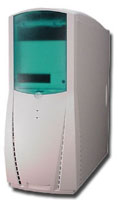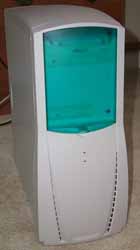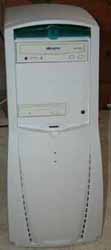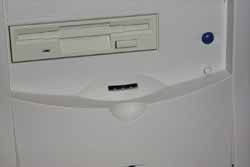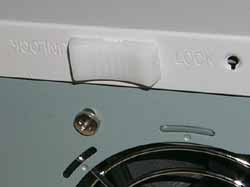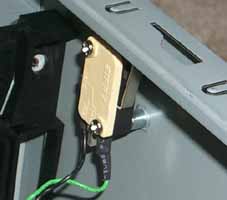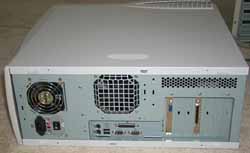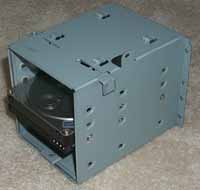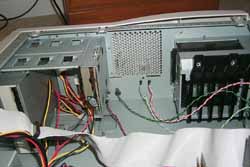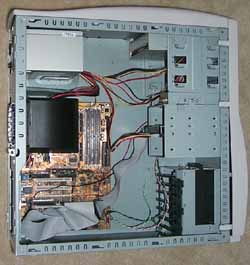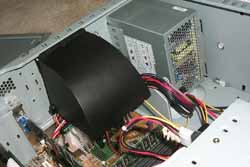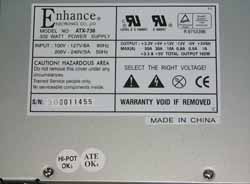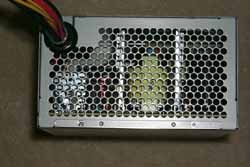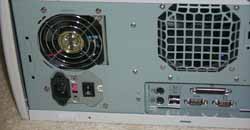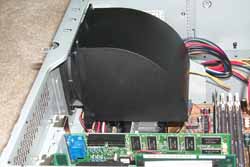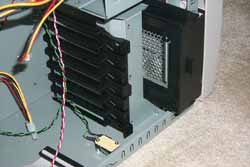
Original Link: https://www.anandtech.com/show/522
Fong Kai FK-320ATX Mid Tower ATX
by Mike Andrawes on April 5, 2000 12:46 PM EST- Posted in
- Cases/Cooling/PSUs
|
Quick Look |
||
|
Fong
Kai FK-320ATX |
The Good | |
|
+
High
quality construction |
||
| The Bad | ||
|
- Non-removeable motherboard tray |
||
Our first experience with a Fong Kai case was with their FK-603, which we found to be an excellent case overall. It was easy to work with, featured very efficient cooling, was quiet, and small - a very tough set of characteristics to put together in a single product, much less one that costs just $60. For that reason, the FK-603 was our case of choice for many of the system in the first edition of the AnandTech Buyer's Guide.
Fong Kai also realized that there is also a huge market for those that want more than just a mid tower. With increased size comes increased expansion and generally more room to work in. Along with not being so cramped comes the added benefit of slightly enhanced cooling simply due to the additional space alone.
Enter the FK-320ATX from Fong Kai, which is being pitched as a "workstation class / enterprise chassis" that can hold a dual Xeon setup. That's a big step up from the small FK-603. Let's see how Fong Kai fairs in this more competitive market where high quality construction and good cooling is the norm.
|
Specifications |
|
| Form Factor | ATX Mid Tower |
| Drive Bays |
3 external 5.25" |
| Cooling |
Power supply exhaust
fan |
| Other Features | Chassis
intrusion switch (optional) Mechanical locking tab |
| Dimensions (HWD) |
19.30 x 7.50 x 17.96
inches |
| Power Supply |
Enhance ATX-703 300W |
Design
The first thing Fong Kai had to do for the target market was make their case bigger, and they have by pushing the FK-320ATX to a little over 19 inches tall. That makes it about 2 inches taller than the FK-603, but it feels even bigger. A plastic cover slides over the external drive bays to provide a nice smooth look to the case. This cover pulls out and the slides under the top panel, producing a slight "hump" in the top panel.. Our evaluation unit featured a translucent blue/green plastic cover, but a variety of translucent colors are available. It should also be noted that the case itself is available in black in addition to the more traditional white.
Underneath the cover, you'll find 3 exposed 5.25" bays and the sole exposed 3.5" bay. Next to that 3.5" bay is a blue power button, with a slightly smaller white reset button beneath it. Both buttons are easy to press and have good tactile feedback. The lower half of the bezel features 2 LED's, one for power and one for HD activity. Each side of the bezel features some decent sized vents that should allow for good air flow through the front of the case.
To get inside the FK-320ATX, simply slide two tabs on each side panel to the "unlocked" position and slide the panel back and off the case. A small metal loop slides through the side panel, allowing a lock to secure the case against unauthorized entry. If someone gets past the lock, the optional chassis intrusion switch, which lies under the left side panel, will let you know if used with a compatible motherboard - virtually every motherboard with hardware monitoring features an intrusion switch header. The plastic front bezel can also be removed by releasing three tabs on each side.
Expansion
In addition to the 3 external 5.25" and single external 3.5" bays mentioned previously, a metal bracket holds the 3 internal 3.5" drive bays. The metal bracket can be removed by pushing a single button and sliding it out. It can also be attached by a single screw if that makes you more comfortable, and that's how our evaluation unit was shipped to us. According to Fong Kai, those internal bays are all rated for 10,000 RPM hard drives, thanks in part to a set of vents in the case sheet metal right in front of these drive bays. While there is no fan mount in that location, it wouldn't be too difficult to rig something up.
External devices slide into their bays from the front of the case and are attached by screws to the non-removable external drive bays. The 5.25" bays can also be used with optional drive rails that can help speed up the assembly process.
Fortunately, great care was taken in this cases construction as sharp edges are virtually nonexistent. We did notice a few around the expansions slots, but just about every other edge was carefully rounded, even in the drive bays - a common culprit in many cases.
Motherboard Installation
Fong Kai pushes this as a "workstation class / enterprise chassis" that can handle a dual Xeon system. The permanently attached motherboard tray features the appropriate mounts to hold the Xeon retention mechanism. However, in order to provide clearance for the Xeon processors, you'll need to remove the fan duct. We'll talk more about this duct a bit later, but the fan itself can stay.
Although there's no removable motherboard tray, the 18 inch depth of the case makes motherboard installation fairly easy. First you'll have to temporarily remove the fan duct to gain full access to the case back plate. This is accomplished by simply pressing one clip and sliding the assembly up. Standard metal standoffs screw into that back plate, and the motherboard then attaches to these standoffs.
Our test bed ABIT BX6 Revision 2.0 fit without any issues and just about any single or dual processor board should fit fine. The layout of the case gives plenty of room to directly access all components of the motherboard.
Power Supply & Cooling
The power supply provided by Fong Kai with the FK-320ATX is the Enhance ATX-730. While Enhance isn't a household name (and who is with power supplies? ;), this was the same unit we received from SYS that fixed some power related issues with their Kryotech 1 GHz Athlon. This is a heavy duty unit that has given us no troubles in all of our testing, and it's, of course, on AMD's Athlon Approved Power Supply List. With a total power rating of 300W and up to 165W combined on the +5V and +3.3V power rails, it should be more than enough to power whatever you can squeeze into the FK-320ATX.
The 80 mm fan exhausts air out the back of the case in accordance with ATX 2.01 specifications. Air is actually drawn in from the front of the power supply in NLX fashion, but is nevertheless effective. They were wise enough to include a physical power switch on the back of the power supply that, although its not mandatory, can come in quite handy at times.
Our evaluation unit included a 92 mm exhaust fan at the rear that worked in conjunction with a duct system positioned directly over the CPU. The duct is simple enough to remove during installation, and has just enough clearance for a standard Slot-1 CPU. Users of slockets may need to remove the duct permanent, or modify it, to get their CPU's to fit. Xeon's will definitely require the removal of the duct, but fortunately, the position of the fan is already ideal for cooling the tall Xeon processors.
Down in the front of the case, a small bracket can take an additional fan. This bracket clips into the front of the case and features two sets of fan mounts - one for a 92 mm fan and the other for a monster 120 mm fan. Our evaluation unit included just the rear exhaust fan and was relatively quiet, running at about 58db.
The Test
For full details on how we tested, please read AnandTech's case testing methodology.
Our evaluation sample FK-320ATX featured an exhaust fan mounted below the power supply with an attached duct.
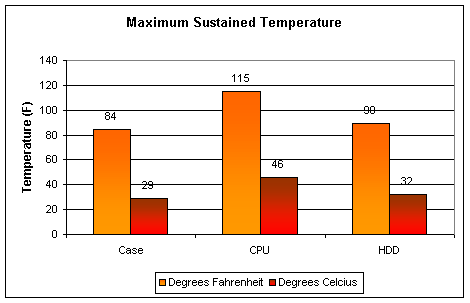
Ambient case temperature in the FK-320ATX is down a bit over the previous champ and its little brother, the FK-603, but hard drive temperature is up slightly. Once again, CPU temperature has generally shown to be most dependent on having a high quality heatsink and fan in AnandTech's testing. It should be noted that the FK-603 had an additional 80 mm fan mounted at the front of the case.
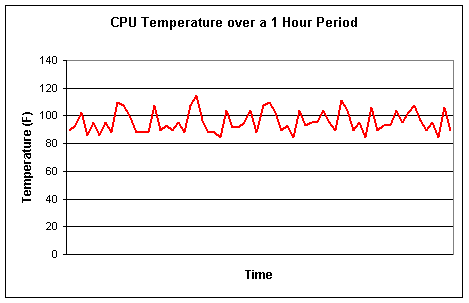
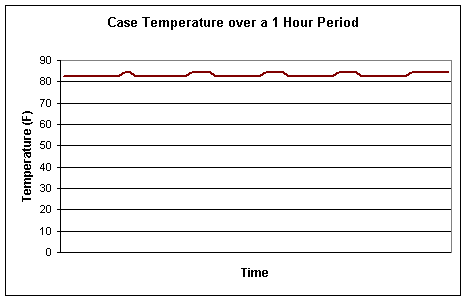
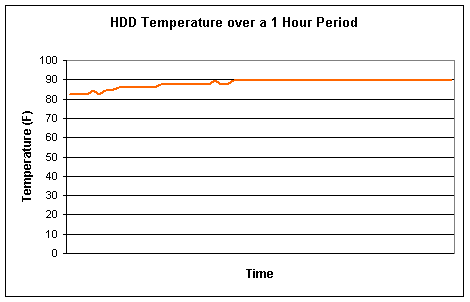
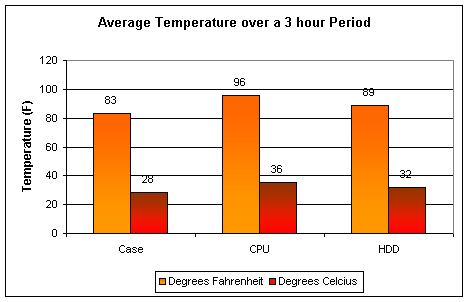
Based on average temperatures, the CPU and overall case temperatures in the FK-320ATX is about the same as in the smaller FK-603, while the HD actually ran a bit warmer. However, the FK-320ATX has the ability to mount an additional fan in front of the hard drive bays to insure those drives stay cool. After all, Fong Kai says this case can handle 10,000 RPM drives without any heat related problems.
Conclusion
|
Quick Look |
||
|
Fong
Kai FK-320ATX |
The Good | |
|
+
High
quality construction |
||
| The Bad | ||
|
- Non-removeable motherboard tray |
||
As noted previously, Fong Kai pitches the FK-320ATX as a "workstation class / enterprise chassis." With that goal in mind, the FK-320ATX is certainly a reasonable entry level solution. Its ability to accept ATX motherboards of any size and 10,000 RPM hard drives are key in this market. The construction quality, cooling, and ease of use are all excellent as well. Our only complaint would be that a workstation or server may need more expansion room.
However, with a price of around $100 - 120, it's not priced like many of those higher end cases, which makes sense as an entry level workstation product. However, that also means that it is not out of reach for anyone looking for a good solid case for his/her personal system.
Overall, the FK-320ATX provides a good compromise between a number of factors. Cooling, craftsmanship, and ease of use are all excellent. While it lacks a bit in expansion space, the FK-320ATX fits in between traditional full towers and traditional mid towers in terms of size. You get the full tower benefit of lots of room to work with on the inside, with the mid tower benefit of smaller exterior dimensions.
How it Rates
|
AnandTech Motherboard Rating |
|
|
Rating
(x/10)
|
|
|
Cooling
|
8.0
|
|
Expansion
|
4.5
|
|
Quality
|
8.0
|
|
Features
|
6.5
|
|
Price
|
6.0
|
|
Availability
|
7.0
|
| Overall Rating - not an average Click here to find out why |
7.5
|

